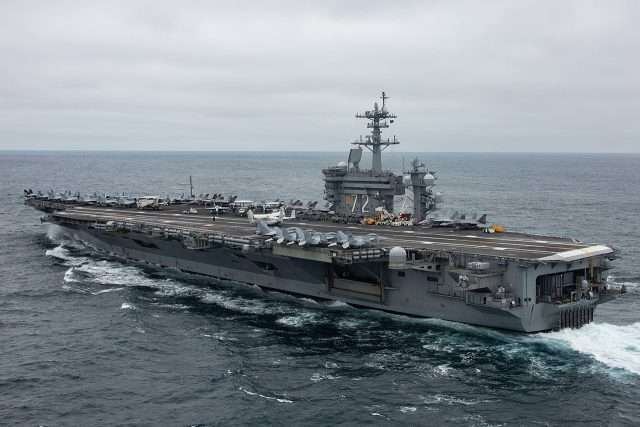
Author: Riccardo Rossi
The U.S. military deployment of the USS Abraham Lincoln near the Korean peninsula confirms Washington’s commitment to increasing its military presence in the Asia-Pacific region, contrasting North Korea’s threats and assuring its regional allies’ security.
These days, Washington has deployed the nuclear aircraft carrier battle group USS Abraham Lincoln, consisting of Carrier Air Wing 9, the guided-missile cruiser USS Mobile Bay and destroyers from Destroyer Squadron, in international waters of the Sea of Japan to conduct bilateral exercises with the Japan-Self Defense force.
Geopolitical scenario
Through the deployment of the Lincoln Carrier Strike Group in the Sea of Japan, the United States is pursuing two political-strategic goals within the geo-maritime space of the Korean Peninsula:
- Washington intends to oppose North Korea’s nuclear missile development program. On March 24th, 2022, Pyongyang carried out a test of the new Intercontinental ballistic missile (ICBM) Hwasong-17, which, since 2020, has been part of the North Korean Strategic Missile Force arsenal, capable of carrying nuclear warheads at distances greater than 10,000 km. The White House considers it a threat to the security of its allies (South Korea and Japan) and the island of Guam where two important military bases of the U.S. Navy and Airforce are located (The new North Korean missile platforms and the strategic consequences in the Asia-Pacific).
- The United States considers the Korean peninsula a geo-maritime space of high geostrategic value, taking into account the geopolitical instability of the Korean island territory, primarily due to the line of assertive foreign policy held by North Korea, favoured by the economic-diplomatic support provided by the People’s Republic of China (PRC) and the Russian Federation. (Geostrategy and military competition in the Korean Peninsula).
Considering the political instability in Korea in the last few years, Washington has developed a complex economic-military doctrine based on the imposition by the United Nations Security Council of economic sanctions against the Kim-Jong Un regime and the strengthening of its economic-military partnership with the Republic of Korea.
In this context, the United States had maintained a high level of foreign direct investment in support of Seoul, especially in the industrial-military sector, as occurred in 2017 when the Obama Presidency and the Moon Jae-in government signed an agreement for the sale and installation of the Terminal High Altitude Area Defense (THAAD) missile defence system.
In addition to industrial cooperation, Washington also wanted to improve the military agreement with the South Korean government, with the intent of optimising the operational capacity of its bases located near Seoul and so increasing the range of missions that its armed forces can carry out in the geo-maritime space including the Sea of Japan and the East China Sea (ECS).
Missions carried out by the U.S. Navy, Army and Airforce near the Korean island territory include reconnaissance operations of the geo-maritime hubs within the ECS claimed by the People’s Republic of China (identified in the Korea Straits, Taiwan and Miyako), supervision of the land and sea border separating Seoul from Pyongyang and offensive military actions in case of conflict aimed at striking strategic/military targets in North Korea and the northern coastline of the People’s Republic of China. (Geostrategy and military competition in the Korean Peninsula)
For these three specific operations, the United States gave the South Korean Army a vital support role in order to increase the operational effectiveness and success of the U.S. Navy, Army and Airforce in the manoeuvres mentioned above.
Risk Assessment
The U.S. established close economic-military cooperation with South Korea in the last years. As a result of this increasing partnership, Washington remains, along with Japan, one of the leading foreign investors in the country. Furthermore, the Pentagon increased the military resources in the U.S. Navy and Airforce bases near Seoul to carry out regular training activities aimed at stabilising and defending the Republic of Korea from the growing assertiveness of Pyongyang.
Consequently, tension has increased with North Korea, causing fears in the Sino-Russian partnership of a possible conflict on the Korean Peninsula, which in their geopolitical vision should be avoided for two main reasons: first, due to the contiguity of their respective territories to North Korea, and second, from an economic perspective since the People’s Republic of China is the second country in terms of benefits from Seoul’s foreign direct investments. In this context, a conflict between the two Koreas would produce severe economic repercussions for the Chinese and South Korean industrial sectors.
Request a full SpecialEurasia report on the U.S. strategy in the Asia-Pacific by contacting our team at this Link.
